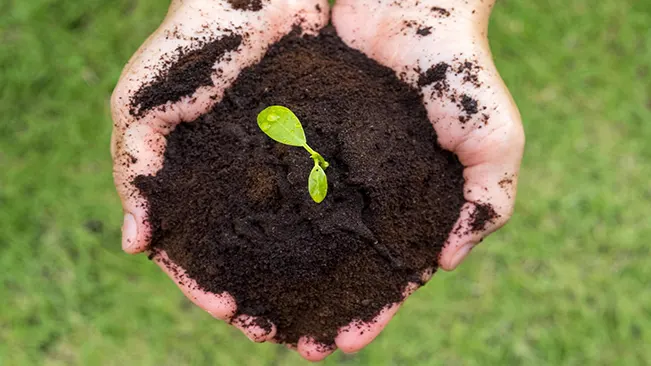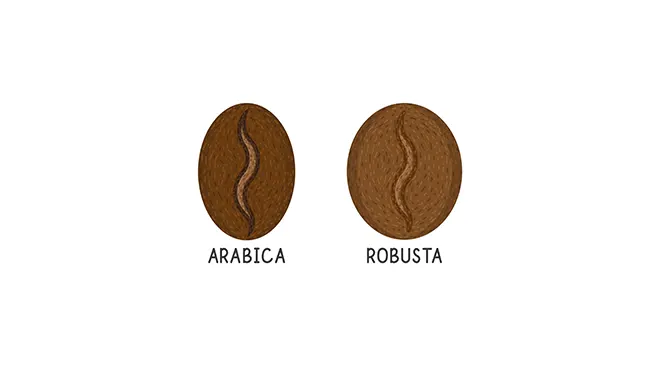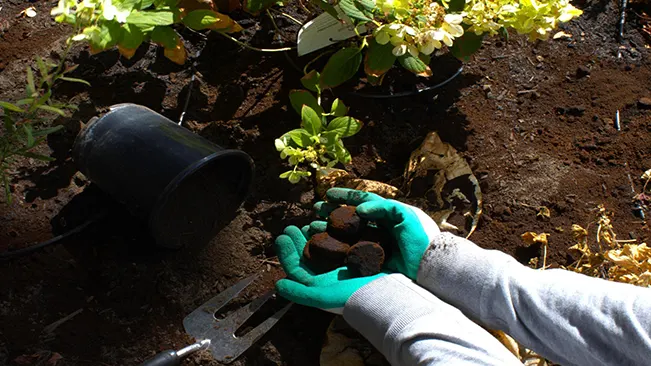Benefits and Drawbacks of Using Coffee Grounds for Plants
- February 5, 2024
- 0 comment
Coffee grounds have gained popularity as a sustainable and eco-friendly option for enhancing soil fertility in gardens and houseplants. As an abundant waste product from the daily ritual of brewing coffee, these grounds are rich in nutrients and organic matter. However, like any gardening practice, using coffee grounds has both benefits and drawbacks. In this article, we will explore the advantages and potential pitfalls of incorporating coffee grounds into your gardening routine.

Nutrients that plants may obtain from coffee grounds
| Nutrient | Function |
|---|---|
| Nitrogen (N) | Essential for leafy green growth and overall plant vigor. |
| Phosphorus (P) | Promotes root development, flowering, and fruiting. |
| Potassium (K) | Supports overall plant health, disease resistance, and fruit development. |
| Calcium (Ca) | Aids in cell wall formation and structure. |
| Magnesium (Mg) | Essential for chlorophyll production and photosynthesis. |
| Trace Minerals | Various micronutrients contribute to overall plant health and vitality. |
Benefits of Coffee Grounds
- Nutrient-Rich Soil Amendment: Coffee grounds are a valuable source of essential nutrients such as nitrogen, phosphorus, and potassium. These nutrients contribute to overall soil fertility and promote healthy plant growth.
- Acidification of Soil: Many plants thrive in acidic soil conditions, and coffee grounds can help achieve this environment. Acid-loving plants like azaleas, blueberries, and rhododendrons can benefit from the pH-lowering properties of coffee grounds.
- Improvement of Soil Structure: Coffee grounds act as an organic matter that improves soil structure. They enhance water retention and aeration, creating an optimal environment for plant roots to grow and access nutrients.
- Natural Pest Repellent: Coffee grounds have been suggested to repel pests such as slugs and snails. Sprinkling coffee grounds around plants may create a barrier that deters these garden pests.
- Sustainable Waste Management: Utilizing coffee grounds in gardening is a sustainable practice that reduces the amount of organic waste in landfills. Recycling coffee grounds for plant use aligns with eco-friendly principles.
Drawbacks of Coffee Grounds
- Acidity Levels: While acidity is beneficial for acid-loving plants, it may be detrimental to plants that prefer neutral or alkaline soil. Care must be taken not to over-acidify the soil, which can harm certain species.
- Potential for Molding: Coffee grounds are prone to molding if they accumulate in thick layers without proper aeration. To prevent mold growth, it’s important to mix coffee grounds with other compost materials and avoid excessive moisture.
- Caffeine Content: Coffee grounds contain caffeine, which acts as a natural herbicide. While this can be advantageous in preventing weed growth, it may also hinder the germination and growth of some desirable plants.
- Limited Nutrient Content: While coffee grounds provide essential nutrients, they may not be sufficient as a standalone fertilizer. Supplementing with other organic or synthetic fertilizers may be necessary to meet the specific needs of certain plants.
- Inconsistent pH Levels: The pH of coffee grounds can vary, depending on factors such as the type of coffee bean and the brewing process. This variability makes it challenging to control and predict the exact impact on soil pH.
Types of Coffee Grounds
Regular Coffee Grounds: The most common type of coffee grounds used for plants is from regular, everyday coffee. These grounds are suitable for a wide range of plants, providing essential nutrients and organic matter.

Decaffeinated Coffee Grounds: If you prefer decaffeinated coffee, the grounds from this type of coffee are equally beneficial for plants. They contain the same nutrients as regular coffee grounds without the caffeine.

Espresso Coffee Grounds: Grounds from espresso coffee can also be used for plants. However, due to their fine texture, it’s advisable to mix them with other organic matter to prevent compacting the soil.

Used Coffee Grounds: While used coffee grounds are the most common choice, fresh grounds can also be used. However, used grounds are often preferred as some of the acidity and oils that may be present in fresh coffee are reduced during the brewing process.

Type of Coffee Beans
Arabica vs. Robusta: The type of coffee beans used to make the grounds can influence their nutrient composition. Arabica coffee grounds generally have a slightly higher acidity and lower nitrogen content compared to Robusta coffee grounds. However, both types can be beneficial for plants.

Avoid Moldy Grounds
Fresh and Mold-Free: Ensure that the coffee grounds you use are not moldy. Mold can be harmful to plants, so it’s crucial to allow used coffee grounds to dry properly before applying them to the soil.
Quantity and Application
Moderation is Key: While coffee grounds offer many benefits, moderation is key. Avoid over-application, especially for plants that may be sensitive to acidity. Mix coffee grounds with other compost materials to create a well-balanced soil amendment.
Steps on Applying Coffee Grounds to your Plants
Collect Used Coffee Grounds
Save used coffee grounds from your daily coffee routine. If you don’t drink coffee yourself, you can ask for used grounds from local coffee shops or friends.

Allow Grounds to Dry
Spread the used coffee grounds on a tray or newspaper and let them dry thoroughly. Drying helps prevent mold growth and makes it easier to apply the grounds evenly.

Store in a Container
Once the coffee grounds are dry, store them in a container with a lid. This keeps them ready for use and prevents moisture absorption.

Check for Mold
Before using the coffee grounds, check for any signs of mold. If you notice mold, discard the affected grounds and only use the mold-free ones.

Mix with Compost (Optional)
For a well-balanced soil amendment, mix the coffee grounds with other compost materials. This combination provides a broader range of nutrients and helps prevent issues like compacted soil.

Determine Plant Preferences
Consider the preferences of the plants you are fertilizing. Some plants, like acid-loving varieties, benefit from coffee grounds due to their acidity, while others may prefer a more neutral pH.

Apply Around the Base
Sprinkle the coffee grounds around the base of the plants. Be cautious not to pile the grounds directly against the plant stems, as this can create a barrier to water absorption.

Avoid Overapplication
Use coffee grounds in moderation. While they are beneficial, too much can potentially alter the pH of the soil. A thin layer (about half an inch) is generally sufficient for most plants.

Water the Plants
After applying the coffee grounds, water the plants as usual. This helps incorporate the grounds into the soil and ensures that the nutrients are available to the plants.
Monitor Plant Response
Keep an eye on how your plants respond to the addition of coffee grounds. If you notice any adverse effects, such as browning leaves or stunted growth, adjust the quantity or discontinue use.
Regular Application
Consider incorporating coffee grounds into your regular gardening routine. Regular, smaller applications are often more beneficial than infrequent large doses.
Conclusion
Incorporating coffee grounds into your gardening routine can be a beneficial and sustainable practice, provided you are mindful of its potential drawbacks. Careful consideration of plant preferences, soil conditions, and proper application techniques can help you maximize the advantages while minimizing the risks associated with using coffee grounds for plants.
FAQs (Frequently Asked Questions)
- Can I use any type of coffee grounds for my plants?
Yes, you can use any type of coffee grounds, including regular, decaffeinated, or espresso grounds. However, it’s essential to avoid flavored or artificially treated coffee grounds. - How do coffee grounds benefit plants?
Coffee grounds provide essential nutrients like nitrogen, phosphorus, and potassium. They also improve soil structure, act as a natural pest repellent, and can help control weeds. - Are coffee grounds acidic, and will they harm my plants?
Yes, coffee grounds are mildly acidic. While this is beneficial for acid-loving plants, it’s important to use them in moderation to avoid over-acidifying the soil, which may be harmful to some plants. - Can I use fresh coffee grounds, or do they need to be used?
Both fresh and used coffee grounds can be used for plants. However, used grounds are often preferred as they have reduced acidity and oils compared to fresh grounds. - How do I prevent mold when using coffee grounds?
To prevent mold, allow the used coffee grounds to dry thoroughly before applying them to the soil. Proper aeration and avoiding excessive moisture will help minimize the risk of mold formation. - Are coffee grounds a substitute for fertilizer?
While coffee grounds provide essential nutrients, they are not a complete fertilizer. It’s recommended to use them in conjunction with other organic or synthetic fertilizers to meet the specific needs of your plants. - Can coffee grounds be used for all types of plants?
Coffee grounds are suitable for a wide range of plants. However, some plants may be sensitive to acidity, so it’s crucial to research the preferences of individual plant species before application. - How often should I apply coffee grounds to my plants?
The frequency of application depends on the needs of your plants. Applying coffee grounds once every few weeks or monthly during the growing season is a general guideline. Adjust based on plant reactions and growth patterns. - Can I use coffee grounds for indoor plants?
Yes, coffee grounds can be used for indoor plants. However, be mindful of potential issues like mold growth and adjust the quantity to suit the size of the indoor pots. - Do coffee grounds attract pests to my garden?
No, in fact, coffee grounds are believed to act as a natural pest repellent. They may deter common garden pests like slugs and snails when applied as a barrier around plants.
Using coffee grounds can be a boon for gardeners looking to enrich their soil naturally. However, it’s essential to apply them thoughtfully to avoid potential issues like soil acidity and excessive moisture. Explore and experiment carefully to harness the full potential of coffee grounds in your garden.

Kristine Moore
Forestry AuthorI'm Kristine Moore, a seasoned garden landscaping professional with over 30 years of experience. My extensive career has been dedicated to transforming outdoor spaces into stunning, sustainable landscapes. With a deep understanding of horticulture, design principles, and environmental stewardship, I have become a respected figure in the field, known for creating harmonious, visually appealing, and eco-friendly gardens. My commitment to excellence and continuous learning in landscaping trends and techniques has solidified my reputation as an expert in garden design and implementation.













Leave your comment